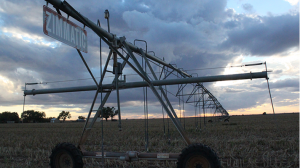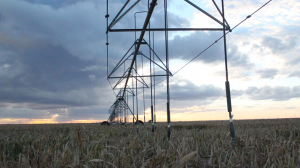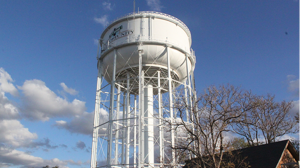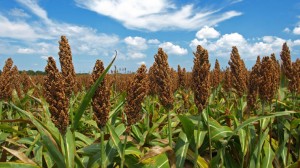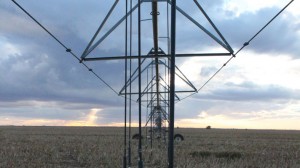Many West Texans have compared the weather conditions during the past few years to the Dust Bowl. Dust devils swirl around the plains as haboobs blow in and cover everything in chalky brown dirt, all while it is 92 degrees Fahrenheit in November.
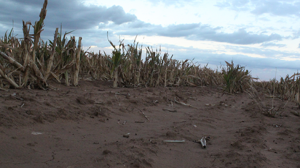 With increased rainfall in 2014, conditions are slowly improving. However, it will take many years for West Texas to recharge its water supply.
With increased rainfall in 2014, conditions are slowly improving. However, it will take many years for West Texas to recharge its water supply.
Ken Rainwater, Ph.D., is the former director of the Texas Tech University Water Resources Center and a professor in the department of civil and environmental engineering. He said the issues currently being studied by the Water Resources Center have been years in the making.
“The drought in 2011 got everybody’s attention,” Rainwater said,” because we had less than six inches of rain, for example, here in Lubbock, and very hot — a lot of difficulties with that. And so, that got a lot of municipalities attention. Prior to that, we’ve had long-time knowledge that the Ogallala is depleting in parts of the Southern High Plains and what that impact is going to be on irrigated agriculture. People have been dealing with that for a good long time.”
Rainwater said having long-term water resources is one of the biggest concerns in the region. While Lubbock has a 100-year water plan, he said, many smaller towns in West Texas may have to find alternate water sources. Lubbock has already begun tapping other water resources besides the main source, Lake Meredith. This year, Lubbock began sourcing water from Lake Alan Henry.
Water issues affect most people on a personal level, but some West Texans have experienced economic harm due to the drought.
Darren Hudson, Ph.D., director of the Cotton Economics Research Institute and a professor in the department of agriculture and applies economics at Tech, said the higher cost of water means higher costs for farmers to produce the famous West Texas cotton crops.
Hudson said certain cotton species are better adapted to dry climates and certain irrigation techniques can alleviate the need for more water.
“Those can cope with low water years,” Hudson said. “There’s really no way to deal with, like, 2011, 2012, when we had no water. It helps, but it’s not perfect.”
According to Hudson, a cotton farmer can spend up to $450 per acre, with most farmers breaking even at the end of the cotton season. This includes irrigation, seeds, herbicides and pesticides needed to produce a fruitful crop. Hudson said most farmers can produce two to three bales of cotton per acre during a good year. The costs to produce a cotton crop, he said, will continue to go up as water becomes more scarce.
Rainwater said one of the biggest issues facing the water crisis in West Texas is the cleanliness of water. This is an issue facing large and small cities, he said, and that money is a deciding factor in how clean the drinking water is.
“We have a number of smaller towns and then some rural community water systems — probably at least 100 of them that are dependent on groundwater from the Ogallala — that are out of compliance in terms of arsenic and fluoride,” Rainwater said. “And so, a lot of those places have been getting notifications from the EPA and the TCQ that they need to do something about it, but they don’t necessarily have the funds to make those changes happen quickly.”
West Texas is known for its random weather patterns, with many areas receiving heavier and more rain than others. Rainwater said that can make it difficult to measure what is really happening with our water stability. Ultimately, natural precipitation is what the West Texas area needs right now, he said.
“I don’t know if you’ve ever noticed, but when you have a house and a yard,” Rainwater said, “the yard likes rain better than it likes water out of the hose.”
